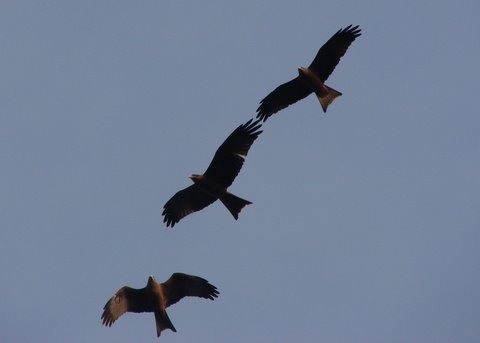|
Raptors
(birds of prey) play a key role in both the structure and functioning of
natural communities. Raptors prey on animals ranging from insects, small
rodents, reptiles, primates etc. The range of their prey suggests that
they have a great significance on the ecology of many other animals. The
carrying capacity of any environment for raptors is usually set by
availability of food supplies and nest sites. Understanding of their
breeding, feeding and habitat behavior is important in determining their
conservation requirements.
In Bwindi
Impenetrable Forest raptors have suffered habitat loss as result of
human encroachment. The principal objective of this study was to
investigate raptor species requirements in the forest reserve and
surrounding areas.
This was
achieved by examining the diet, breeding, and interactions with man and
his cultivated land. Raptors and their nests were sought and observed.
Observations on feeding habits were conducted on active nests and prey
was identified. Pellets and discarded materials were also collected from
under the nests and feeding sites. Interviews were conducted to
investigate local people’s attitudes towards raptors. The data was
collected from August 1987 to August 1989.
Forty one
active nests were found these belonged to seven species: Crowned
Hawk-eagle (Stephanoaetus coronatus), Mountain Buzzard (Buteo
trizonatus), Rufous-chested Sparrow hawk (Accipiter rufiventris),
Harrier Hawk (Polyboroides radiates), Great Sparrow hawk, Augur
Buzzard (Buteo augur), Bateleur (Terathopius ecaudatus),
and the Long-crested eagle (Lophoaetus occipitalis) and
monitored.

Nesting season extended from February- October, laying season
extended from April-November. Both sexes participated in caring for the
young. Reproductive rates were low.
Raptor density was very low.
Only the Black kite (Milvus migrans) was recorded migrating.
Raptors differed in their food habits. Three hundred and six prey items
composed of insects, reptiles, rodents, small antelopes and primates
were recorded.
Migrating Black kites
The local
people knew two-thirds of the species. The most serious threats to raptors are the indiscriminate deforestation outside the Forest Reserve
and persecution by local people. Pesticide pollution, eggs collection,
sport hunting and bird watching appeared insignificant. The study
recommends that raptors be protected from human disturbances through:
legislation, buffer zone creation, limiting access to breeding sites and
local education.
|

